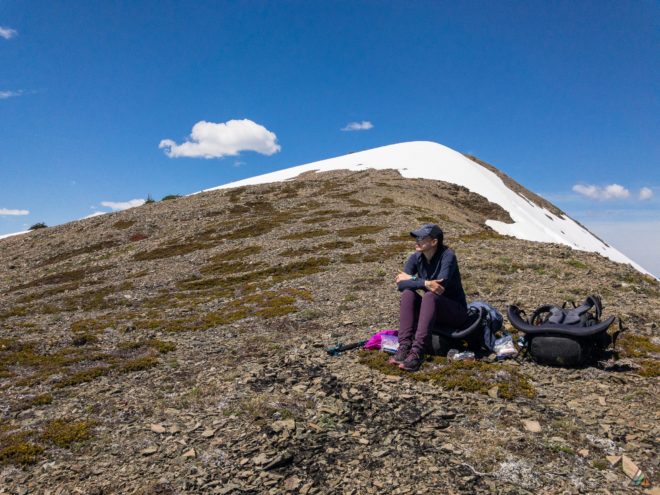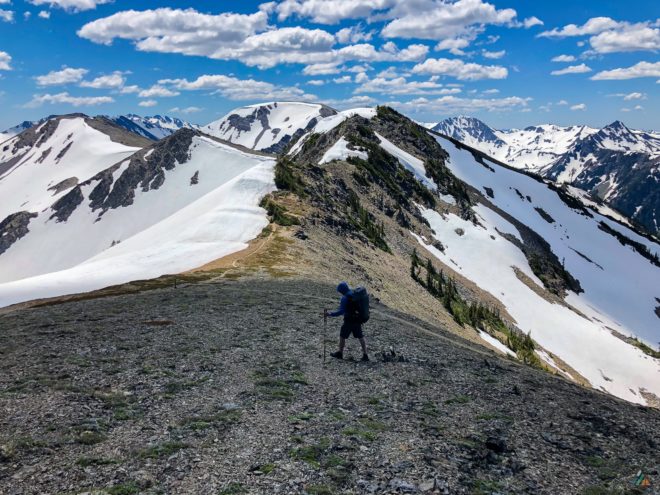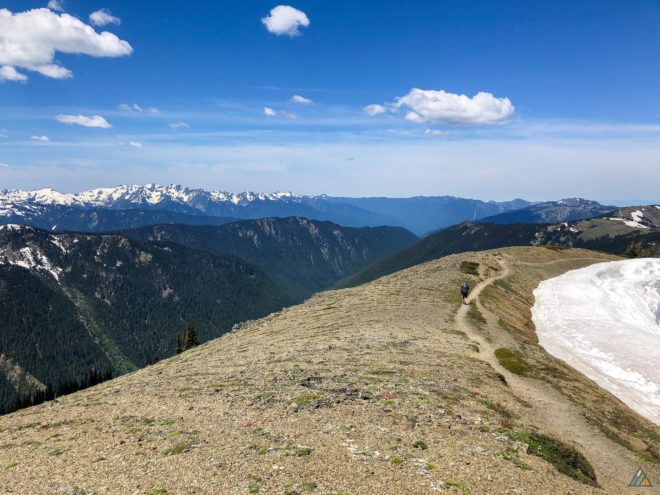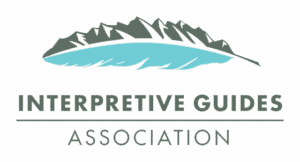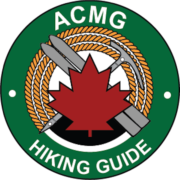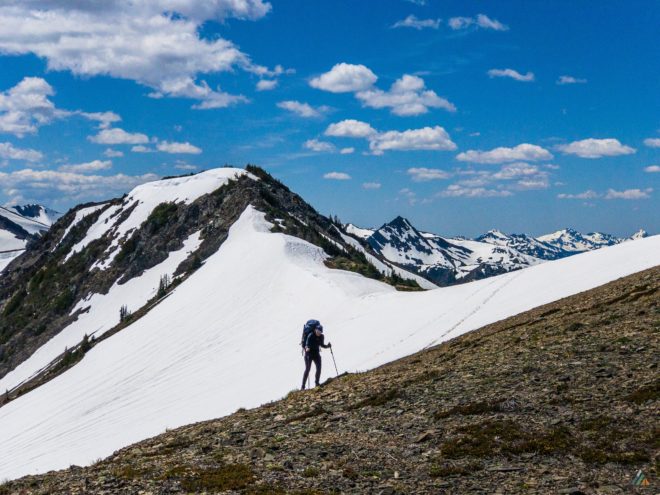
The Grand Pass Trail in Olympic National Park begins at Obstruction Point and descends into the Grand Valley.
This trailhead gives the advantage of starting at an elevation of 1875 m (6100 ft). The treeless, dry landscape reminds one of the tundra or Arctic. The route follows Lillian Ridge, rising before the long descent to the Grand Valley. Grand Lake, Moose Lake, and Gladys Lake are the major subalpine water bodies in the valley bottom. A trail junction near Grand Lake leads to the Badger Valley. Beyond Moose and Gladys Lake, the trail ascends meadows, rock, and seasonal snow to Grand Pass at 1966 m (6450 ft).
Driving Directions

Take the Coho Ferry from Victoria Inner Harbour to Port Angeles, Washington, USA (90 min sailing). Advance reservations recommended. Cost $175 USD/return for vehicle and 2 passengers. Black Ball Ferry Line. Drive 70 min (27.3 miles) on Hurricane Ridge Road and Obstruction Point Road. Arrive at Obstruction Point Trailhead in Olympic National Park. Google Map
Permits Required
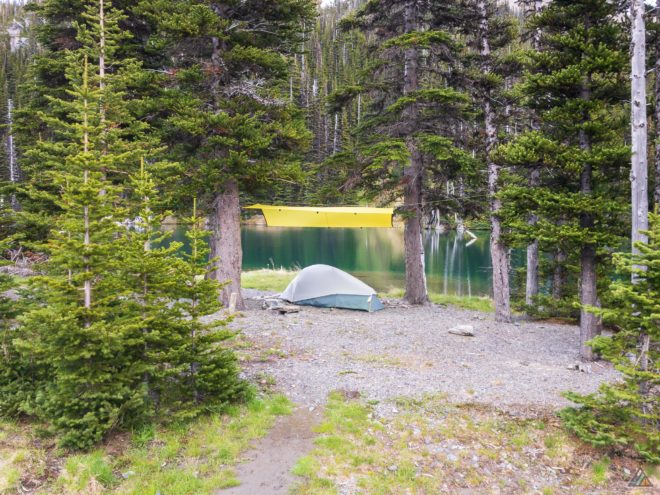
All overnight stays in the Olympic National Park wilderness require a permit year-round. Backcountry areas with quotas need reservations. Wilderness Camping Permit fees are $8 USD per night per person. Persons 15 years or younger are free. Olympic Annual Wilderness Passes are $45 USD per person. Wilderness Passes cover your fees, but permits plus or minus reservations are still required. We find the best place to get permits is the Port Angeles Wilderness Information Centre (WIC). This location is convenient for us after driving off the Coho Ferry from Victoria. WIC rangers can answer your questions about permits, food storage, weather, trail conditions, or wildlife.
Camping Options
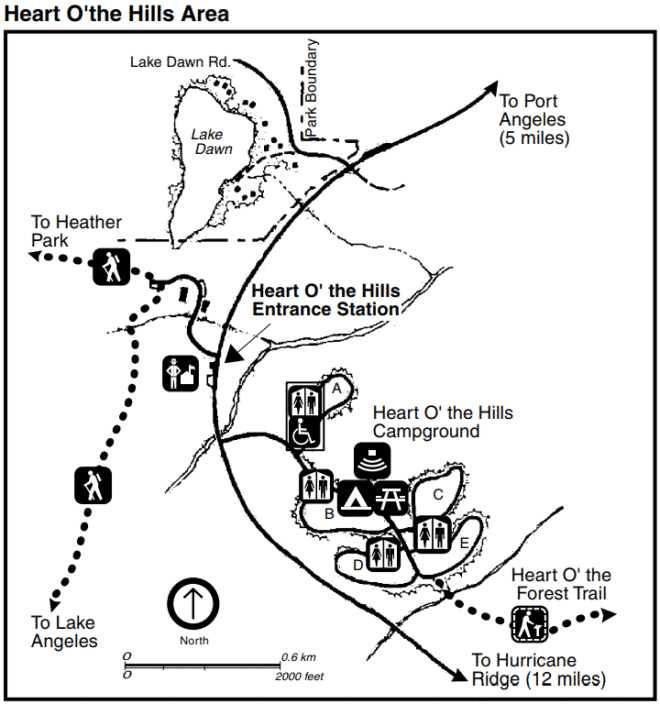
Our pre-trip evening was spent at the Heart O’ the Hills Campground. This first-come-first-served campground has 105 drive in sites. Some sites suitable for RVs. Flush toilets and potable water. Fee is $20 USD per night via a self-serve envelope system. Open year round. Walk-in only during heavy snowfall.
Trip Report
Obstruction Point to Grand Valley – June 15-17, 2018

- Distance: 17.4 km (10.8 mi)
- Duration: 3 days
- Peak: 1981 m (6499 ft)
- Gain: 866 m (2841 ft)
- Route: CalTopo
One month after our East Fork Quinault & Enchanted Valley trip, we returned to Olympic National Park. We left our beloved river valleys for a colder mountain experience. Back in August 2014, we hiked into the Grand Valley from Obstruction Point road. On a hot, dry day, we walked the ridge under Elk Mountain before dropping into the Badger Valley. We camped one night at a primitive permit site in the Badger, and one night at Moose Lake. Together we accomplished the Grand Pass objective. The conditions for our repeater trip this year were different. Backpacking the Grand Valley in June 2018 meant seasonal snow and freezing temperatures. Our objectives included: physical training, cold weather camping, and ice axe practice. Like our Quinault trip, we set up a base camp for two nights. We went as far as we could towards Grand Pass, enjoying the experience of going with the flow. The wildlife viewing was astonishing. We even saw a special and elusive mammal on this trip!
- Day 1: Obstruction Point to Moose Lake
- Day 2: Moose Lake to Grand Pass
- Day 3: Moose Lake to Obstruction Point
Day 1: Obstruction Point to Moose Lake
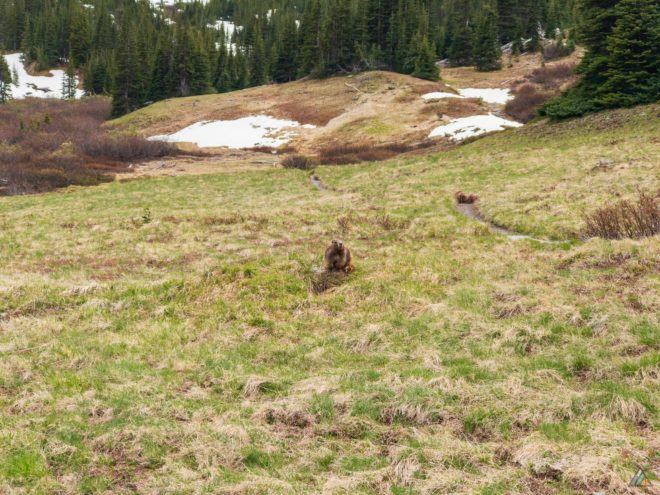
- Distance: 6.5 km (4 mi)
- Duration: 2 h 43 min
- Peak: 1968 m (6457 ft)
- Ascent: 266 m (873 ft)
- Descent: 587 m (1926 ft)
The hike from Obstruction Point 1848 m (6100 ft) to Moose Lake 1547 m (5075 ft) was an exercise in managing body warmth. As we walked Lillian Ridge, we navigated ice and seasonal snow. We kept our warm puffies on all day due to wind and general cold. Our backpacks were heavier than usual because of added alpine boots and ice axes. Water sources were absent for several hours. As we finished our switchbacks into the subalpine, the air warmed. Out of the snow, we found a strong creek and had a welcome snack and water break. The only other humans on the Grand Valley Trail was a parks trail maintenance team. Moose Lake Camp was full of the usual wildlife. Olympic marmots had created a massive burrow structure a few metres from camp. The closest living relatives of this endemic species are the Vancouver Island marmot and the hoary marmot. Mule deer with spotted babies were all over the meadow. We set up a nice basecamp on the shore of Moose Lake (permit required, reservations recommended) and watched the brook trout hunt for bugs. Jagged peaks with lingering snow towers surrounded our camp. After dinner, when Mike went to hang the food on the bear wire, he noticed a tiny fawn sleeping alone as the base of a tree. We researched and later learned that fawns have evolved to have no scent, making them less detectable to predators. Our lullaby that evening was a robin song from the top of a nearby tree.
Day 2: Moose Lake to Grand Pass
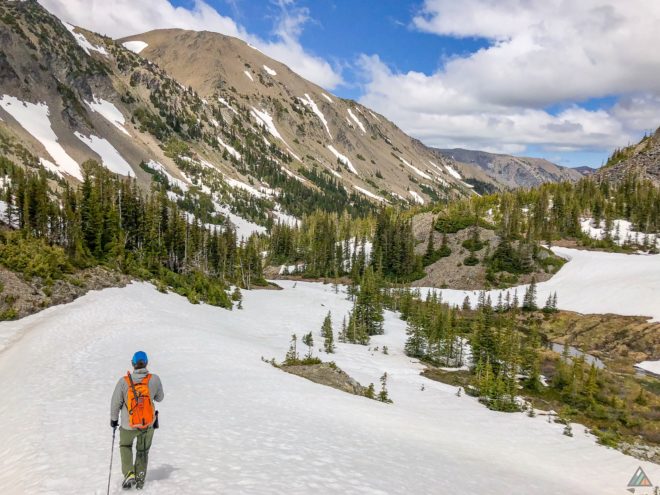
- Distance: 4.2 km (2.6 mi)
- Duration: 4 h 30 min
- Peak: 1759 m (5771 ft)
- Gain: 280 m (919 ft)
Our objective was to hike up the Grand Valley as far as we could before the seasonal snow stopped us from going further. The morning temperature was only a few degrees Celsius. The best approach to warming up fast is to get moving right away. I put on all my layers and walked up the hill to get our food from the bear wire. Hot chocolate helped after that chore. There was lots of seasonal snow as we hiked beyond Moose Lake and Gladys Lake. Grand Creek drained through melted snow banks. A few small creeks nourished rich moss gardens sprinkled with fresh wild flowers. We navigated using a paper map and compass, along with our Gaia GPS app and digital maps on our phone. Once we found a safe snow slope, Mike taught me how to slide and self-arrest with the ice axe. We had lots of fun and stayed warm in our alpine boots! There was seasonal snow all the way up to Grand Pass. We went as far as we could, but got stopped by dangerous terrain. Heading back down the valley, we noticed that no other humans were in the area. We stopped at Gladys Lake to check out the deserted camp and take a snack break. Our second evening at Moose Lake was sunny and calm. The marmots were getting more accustomed to us. After the sun went behind the hills at 1820 h, the cold air pushed us to the tent and into our cozy sleeping bags. A hot water bottle helped a lot!
Day 3: Moose Lake to Obstruction Point

- Distance: 6.7 km (4.2 mi)
- Duration: 3 h 20 min
- Peak: 1981 m (6499 ft)
- Ascent: 586 m (1923 ft)
- Descent: 265 m (869 ft)
For our final day, we decided to let the sun warm the tent before getting up. As it turned out, our relaxed start resulted in a fabulous wildlife viewing. Mike was packing up the tent while I watched the brook trout in Moose Lake. The air was soft and calm. Without warning, marmot whistles pierced the quiet. A relay of whistles continued up the valley in rapid succession. I looked up the marmot hill and saw a large furry brown animal walk along the trail. I wasn’t sure what I was seeing. At first I thought he was a cougar, but he didn’t have a long tail. His front leg had stripes and his tail was a puff. Mike took a few desperate zoom photos with his iPhone. He melted into the bushes after a few seconds. We identified this fellow as a bobcat! Felines are elusive in the wild, so we really appreciated our special sighting. The marmots were less impressed of course. Their whistles continued long after the bobcat was out of our sight and we started to hike. The weather was bluebird as we retraced the switchbacks up to Lillian Ridge and Obstruction Point. When the skies are clear, this route affords excellent views of many other connecting ridges throughout Olympic National Park. We looked across the valleys and made plans to return for many more adventures.
